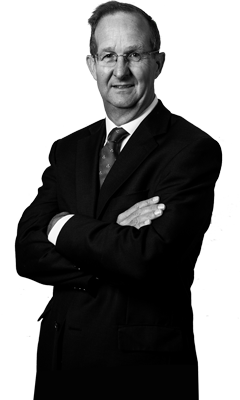Investor Insights

SHARE
What constitutes a quality business?
With the demise of Silicon Valley Bank (SVB) and the effect on Credit Suisse – its share price has declined 90 per cent in five years to CHF1.70 – I thought it appropriate to return to basics and dig a bit deeper into what constitutes a “Quality” business, also known as a “Compounding Machine”.
- A sustainable competitively advantaged business model means an economic moat which is hard to replicate due to, for example, high switching costs, network effects, dominant brands, scale leadership, or unique niche. These businesses generally have pricing power or a cost structure advantage. Given capitalism conspires to compete away competitive advantage, a significant question is the durability of the economic moat.
- Structural growth opportunities give a high-quality company the ability to reinvest its free cashflow to become a “compounding machine”. Below, I give an example of two companies – one which produces free cashflow (at 25 per cent of Net Operating Profit After Tax), meaning there is residual cashflow left over for M&A activity, dividends or buybacks – and one where the cost of growth via capital investment exceeds earnings meaning negative free cashflow for the company (at negative 50 per cent of Net Operating Profit After Tax). It is this cost of growth calculation which analysts often under-estimate.
- Trustworthy stewards of capital – self-explanatory in that investors should avoid companies where the leadership benefits insiders at the expense of other shareholders. Businesses run by leaders that are strategic in their approach, have a clear, long-term vision and a culture of excellence, humility and trust.
- Self-financed growth and robust balance sheets is an attribute which is often over-looked when markets are running, or when interest rates were approaching historic lows. It is free cashflow which determines a company’s ability to compound value over time. It is cashflow that supports a company’s balance sheet, funds capital investments, and provides a source of returns in the form of dividends or buy-backs. Robust cashflow businesses rely less on debt or equity capital raisings to fund growth.
|
Company 1 (US$m) |
|
|
Company 2 (US$m) |
|
|
|
Net Operating Profit After Tax (NOPAT) – 15% p.a. growth |
Capital Investment = 75% of NOPAT |
Free Cash Flows = 25% of NOPAT |
Net Operating Profit After Tax (NOPAT)- 15% p.a. growth |
Capital Investment = 150% of NOPAT |
Free Cash Flows = Negative 50% of NOPAT |
|
100 |
|
|
100 |
|
|
|
115 |
86 |
29 |
115 |
173 |
-58 |
|
132 |
99 |
33 |
132 |
198 |
-66 |
|
152 |
114 |
38 |
152 |
228 |
-76 |
|
175 |
131 |
44 |
175 |
262 |
-87 |
|
201 |
151 |
50 |
201 |
302 |
-101 |
|
231 |
173 |
58 |
231 |
347 |
-116 |
|
266 |
200 |
67 |
266 |
399 |
-133 |
|
306 |
229 |
76 |
306 |
459 |
-153 |
|
352 |
264 |
88 |
352 |
528 |
-176 |
|
405 |
303 |
101 |
405 |
607 |
-202 |
|
4.05X = 15% CAG over 10 years |
15% CAG |
15% CAG Aggregate FCF is $584 |
4.05X = 15% CAG over 10 years |
15% CAG |
15% CAG Aggregate FCF is negative $1167 |
In summary, Company 1 spends 75 per cent of its annual Net Operating Profit After Tax (NOPAT) on Capital Investment leaving it with US$584 million of cash at the end of the ten-year period under review for M&A activity, dividends or buybacks. Company 2 spends 150 per cent of its annual Net Operating Profit After Tax on Capital Investment leaving it with negative US$1,167 million of cash at the end of the ten-year period under review and will need to tap the debt and/or equity markets to continue as a going concern. I repeat, it is this cost of growth calculation which analysts often under-estimate.

